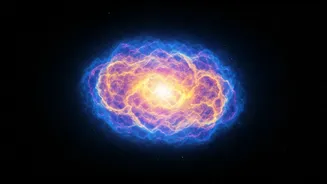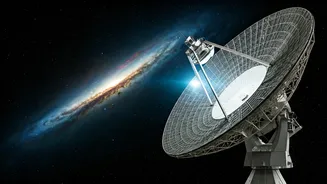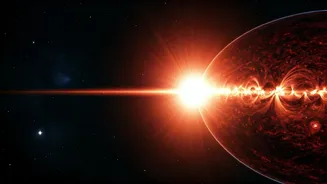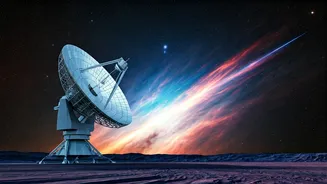Stellar Explosion Unveiled
In an exciting development, early observations of a supernova have unveiled a unique look at stellar death. The explosion, captured in its initial moments,
showed an olive-shaped blast, challenging the existing models. This new understanding comes from advanced telescopes, which are able to observe this cosmic event. The asymmetry of the blast implies that the star's destruction is not uniform, which is a key characteristic of the supernova. This data, gathered by scientists, marks a pivotal moment in understanding the life and death cycle of stars.
Asymmetrical Blast Discovered
The observations of the supernova show a lopsided explosion instead of the evenly distributed blast previously predicted. The shape of the explosion, resembling an olive, demonstrates that the stellar material doesn't expand equally in all directions. This observation significantly alters scientists’ ideas of how supernovas occur. This kind of research is important because it can lead to a more in-depth comprehension of star formation and evolution, as well as the creation of the elements that makeup the universe. This provides astronomers with a crucial opportunity to refine existing models and theories of supernovae.
First Moments Captured
This achievement is marked by the ability to capture the supernova in its earliest phases, a feat that offers crucial insights into the physics of such events. This initial stage is important as it offers hints on the processes that drive the star's final explosion. The James Webb Telescope played an instrumental role in these observations, revealing details previously hidden from view. This capability has enabled scientists to peer directly into the core of the event, offering invaluable insights into its mechanisms. The observations give a foundation for future exploration, with the aim of shedding light on other astronomical mysteries.
Implications for Research
The asymmetric structure of the supernova holds important implications for astrophysics research. The observations call for a revision of prevailing models of stellar explosions, emphasizing the importance of diverse, dynamic processes in star death. Furthermore, it supports the need for more advanced simulations to include the intricate details of the explosion. These findings are important not only for the specific study of supernovae, but also to build knowledge about the evolution of the universe and the elements it is composed of. This new research also aids our understanding of how cosmic events influence the formation of planetary systems.
Webb Telescope's Role
The James Webb Telescope’s role was crucial in making these extraordinary observations possible. The telescope's ability to observe in infrared allows scientists to see through the cosmic dust and see the events of the supernova in its early phases. Webb's sensitivity and precision enabled it to collect data that was not previously available. The success of these observations underscores the significance of space-based observatories. This data underscores Webb's capabilities, indicating a new era of astronomical investigation, as well as its capabilities in helping us comprehend the complexities of the universe.












